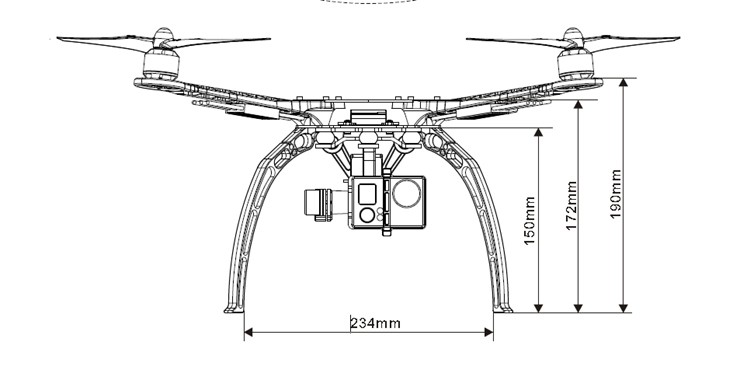

In height control, all angle indicators on each axis should be approximately zero especially when taking, landing or moving upwards. However, in building the reference stability control height at the axis angle is necessary, so the designed controller can reach a stable plane. The power of a quadcopter can be defined in many different ways such as quaternion, Euler angle, and directional matrix. The body structure is defined by the shape of a quadcopter, with rotor axes pointing in the right z- direction and arms pointing in x and y directions.įig. The non-inserted frame is defined by the ground, with gravity pointing in the wrong z-direction. We will begin to discover the power of the quadcopter by introducing two frames that will work on it. Progresses 1 and 2 have a contrasting pitch towards 2 and 4, so all thrush has the same direction. This process is required to pay for the result of the action / response (3rd Law of Newton). For the quadcopter to be able to maintain forward movement by increasing the speed of the front rotors while reducing the speed of the rear rotor simultaneously, which means changing the pitch angle. Duplicates 2 and 4 rotate counterclockwise (CCW), 1 and 3 rotate clockwise (CW). The X-configuration quadcopter is considered more stable compared to the + configuration, which is an additional acrobatic type. There are about 2 configurations for multiple quadcopter designs + and x. The quadcopter configuration can move and remain vertically which is a great advantage as it reduces the requirements for the landing platform. The standard quadcopter has four rotating angles and four input power, which is provided by each motor as shown in Fig 1. This paper will introduce a simplified model of Quadcopter dynamics and control. Together, these factors create a problem of control that is very interesting. Lastly, unlike land vehicles, helicopters have very little friction to restrict their movement, so they should give their flexibility to stop moving and stay stable. The emergence potential is very nonlinear, especially after the calculation of complex aerodynamic effects. To achieve the six degrees of freedom, rotation and translation movement go hand in hand. Quadcopter control is a particularly difficult and exciting problem, with 6 degrees of freedom (3 renders and 3 rotations) and only four independent inputs (rotor speed), quadcopters are severely underactuated. The declining costs of current microprocessors have made quadcopter controls electrical and completely independent for commercial, military, and recreational purposes. The development of quadcopters has come to a standstill recently because controlling four independent rotors has proved very difficult and impossible without the help of electronics. A swashplate method was needed to allow the helicopter to use more degrees of freedom, but the same level of control could be achieved by adding multiple rotors. Quadrotor (Quadcopter) is a four-propeller helicopter, usually arranged in a square, with four independent rotors, reducing the need for a swashplate. KeywordsDesign Control Quadcopter PID Dynamics

We have gone through a general control strategy and explaining the process of tuning PID. Talking about the different available configurations of quadcopter and dynamics of handling each to achieve a required speed, position, and altitude control. Our paper goes through the complete process of making a person understand the working of a quadcopter in 6 DOF even after having 4 actuators. We understand there was a need of focusing on attitude, altitude, and position control and help with required control systems. Robotics and Automation, MIT-WPU, Pune, IndiaĪbstract Most of the quadcopters out there talk about controlling the roll, pitch, and yaw.


 0 kommentar(er)
0 kommentar(er)
